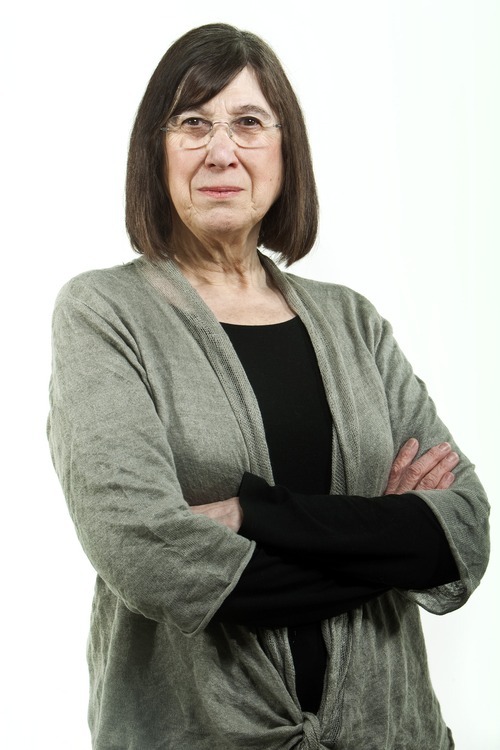This is an archived article that was published on sltrib.com in 2012, and information in the article may be outdated. It is provided only for personal research purposes and may not be reprinted.
In a remote mountain valley tucked between northeastern Utah and northwestern Colorado along the Green River, "Brown's Hole" represents a 19th century frontier in the American West.
A winter home for the Comanche, Green River Shoshoni, Ute and other native peoples, the region was charted in 1805 by Lewis and Clark, and by the 1830s foraged by Euro-American hunters, trappers and explorers, including three mountain men who built the trading post, Fort Davy Crockett.
Known as "Fort Misery" in 1837, the poorly constructed mud and timber garrison was a social hub for mountain travelers and fur traders. When one of the partners stole some horses, the partnership folded. A chase followed. A standoff occurred. The horses were rescued, but the thief escaped and the abandoned fort quickly turned to rubble.
By the 1870s, the renamed Brown's Park attracted mountain men, ranchers, settlers, immigrants, freedmen (former slaves), cowboys, cattle rustlers and outlaws. It became a melting pot of diversity, a rarity of ethnicity and ethics stirred by personal interpretations of the law. According to the online Bureau of Land Management Cultural Resources Series on Utah, the Park was for many entrepreneurs, such as Scottish émigré John Jarvie, a frontier in line with the American Dream.
At 26, Jarvie immigrated to Rock Springs, Wyoming Territory in 1870 and bought the Will Wale Saloon, showcased vaudeville acts, managed a billiard table, sold wholesale and retail liquor and became a U.S. citizen in 1875.
In 1880, he married Nellie Barr ("Pretty Little Nell"), who had a lovely voice and moved to Brown's Park.
The couple honeymooned in a cozy, two-room dugout and later settled in a handsome three-room log cabin. Within a year, Jarvie built the only fully stocked general store/trading post within 70 miles. He sold merchandise from textiles, corsets, trade goods and gourmet foods — he liked mourning dove pies and Scottish oatmeal — to boots, wagon supplies, Indian flour and saddles.
In 1892, after pouring whiskey from plugged barrels berthed on a raised platform by the sales counter, the storekeeper was charged for selling spirits without a license and taken to court in Vernal. Sampling the evidence, the jury decided Jarvie's whiskey tasted like rot gut. The defendant was acquitted.
In 1881, Jarvie became the town's postmaster. He acquired real estate on both sides of the river, invested in livestock, built a blacksmith shop and designed a waterwheel, 16 feet in diameter, for irrigation. When long-time Park resident and ferry owner Doc Parson died, the congenial businessman stepped in and ran Jarvie's ferry. He hired operators from the town's list of "colorful characters," touted a shipshape organization and often extended a helping hand over the Green River by accepting farm produce instead of cash.
A well-read man, an athlete who loved to race, and a generous host who threw great parties, Jarvie played the organ, recited poetry by Robert Burns, and read people's heads (phrenology). Grieving the loss of his wife to tuberculosis when their youngest child was 8, the admittedly hard-to-please single parent dug his heels in and learned how to sew their clothes.
For years, the family ranch welcomed sojourners just as the dugout provided safe haven for outlaws. Like most Park residents, Jarvie knew many of them. In 1895, he presided over the town's "Outlaws' Thanksgiving Dinner." It was a formal affair — everyone was dressed to the nines — in which Butch Cassidy served coffee.
On July 6, 1909, the Park's honor code was violated. Jarvie, who suffered heavy losses in mining ventures, was murdered in cold blood. His trussed body was placed in a boat on the Green River and set adrift.
"What the motive could have been is a mystery," reported the (July 9, 1895) Vernal Express. "Possibly he knew too much, as there have been many dark and shady things happen over in the Brown's Park country."
Despite great efforts to catch them, the murderers — who absconded with a $100 bill — never were found.
Eileen Hallet Stone, an oral historian, may be reached at ehswriter@aol.com. Additional sources: John D. Barton's "Fort Davy Crockett" in the Utah History Encyclopedia.



